2-Methyl-1-butanol
Synonym(s):sec-Butyl carbinol;2-Methyl-1-butanol;2-Methylbutyl alcohol, sec-Butyl carbinol
- CAS NO.:137-32-6
- Empirical Formula: C5H12O
- Molecular Weight: 88.15
- MDL number: MFCD00004743
- EINECS: 205-289-9
- SAFETY DATA SHEET (SDS)
- Update Date: 2024-12-18 14:15:30

What is 2-Methyl-1-butanol?
Chemical properties
clear colorless to very slighlty yellow liquid
Chemical properties
Amyl alcohols (pentanols) have eight isomers. All are flammable, colorless liquids, except the isomer 2,2- dimethyl-1-propanol, which is a crystalline solid.
Chemical properties
(+/–)2-Methyl-1-butanol has a cooked, roasted aroma with fruity or alcoholic undernotes.
Occurrence
Reportedly present in over 120 natural food products, including apple, apricot, banana, orange, bilberry, black currant, cranberry, papaya, strawberry, tomato and alcoholic beverages
The Uses of 2-Methyl-1-butanol
2-Methyl-1-butanol is a whiskey-scented amyl alcohol that is naturally present in all fruits wine and beer. 2-Methyl-1-butanol is commercially used as a solvent in paints and oils and as flavorant in many processed foods. 2-Methyl-1-butanol has a characteristic redolence, which is thought to account for its active properties as an attractant for hornets and certain wasps, such as yellowjackets, in traps. As a biochemical active ingredient, it has a non-toxic mode of action – targeted pests are killed through physical entrapment.
The Uses of 2-Methyl-1-butanol
Solvent, organic synthesis (introduction of active amyl group), lubricants, plasticizers, additives for oils and paints.
The Uses of 2-Methyl-1-butanol
2-Methyl-1-butanol is a volatile metabolite produced by a number of different plant species. Used as a solvent in organic synthesis (introduction of active amyl group), in lubricants, plasticizers, additives for oils & paints. It is also employed as a perfuming agent.
What are the applications of Application
2-Methyl-1-butanol is a volatile plant metabolite
Definition
The active alcohol from fusel oil. The synthetic product is a racemic mixture of both dextroand levorotatory compounds and therefore not optically active.
Preparation
Prepared from hydroboration of 2-methyl-1-butene. (–)2-Methyl-1-butanol is isolated by fractional distillation of fusel oil
Production Methods
2-methyl-1-butanol are refined from ethanol production as fusel oil. Isoamyl alcohols are used as solvents for oils, fats, resins, and waxes; in the plastics industry in spinning polyacrylonitrile; and in manufacturing lacquers, chemicals, and pharmaceuticals.
Aroma threshold values
Odor threshold in air: detection at 0.14 mg/m3; recognition at 0.83 to 1.7 mg/m3.
General Description
S-(-)-2-Methyl-1-butanol is a precursor for the synthesis of chiral liquid crystals. It is a potential new-biofuel.
Hazard
Moderate fire and explosion risk. Toxic by ingestion, inhalation, and skin absorption.
Flammability and Explosibility
Flammable
Safety Profile
Moderately toxic by skin contact and intraperitoneal routes. Mddly toxic by ingestion. An eye, skin, and mucous membrane irritant. Can cause deafness, delirium, headache, nausea, and vomiting. Flammable liquid when exposed to heat, flame, or oxidizers. Explosive in the form of vapor when exposed to heat or flame. Incompatible with H2S3. To fight fire, use alcohol foam, spray, mist, dry chemical. When heated to decomposition it emits acrid smoke and irritating fumes. See also ALCOHOLS.
Potential Exposure
(n-isomer); Suspected reprotoxic hazard, Primary irritant (w/o allergic reaction), (iso-, primary): Possible risk of forming tumors, Primary irritant (w/o allergic reaction), (sec-, active primary-, and other isomers) Primary irritant (w/o allergic reaction). Used as a solvent in organic synthesis and synthetic flavoring, pharmaceuticals, corrosion inhibitors; making plastics and other chemicals; as a flotation agent. The (n-isomer) is used in preparation of oil additives, plasticizers, synthetic lubricants, and as a solvent.
Shipping
UN2811 Pentanols, Hazard Class: 3; Labels: 3- Flammable liquid. UN1987 Alcohols, n.o.s., Hazard Class: 3; Labels: 3-Flammable liquid.
Purification Methods
Reflux the butanol with CaO, distil, reflux with magnesium and again fractionally distil it. A small sample of highly purified material is obtained by fractional crystallisation after conversion into a suitable ester such as the trinitrophthalate or the 3-nitrophthalate. The latter is converted to the cinchonine salt in acetone and recrystallised from CHCl3 by adding pentane. The salt is saponified, extracted with ether, and fractionally distilled. [Terry et al. J Chem Eng Data 5 403 1960, Beilstein 1 IV 1666.]
Incompatibilities
Forms an explosive mixture with air. Contact with strong oxidizers and hydrogen trisulfide may cause fire and explosions. Incompatible with strong acids. Violent reaction with alkaline earth metals forming hydrogen, a flammable gas.
Waste Disposal
Dissolve or mix the material with a combustible solvent and burn in a chemical incinerator equipped with an afterburner and scrubber. All federal, state, and local environmental regulations must be observed.
Properties of 2-Methyl-1-butanol
| Melting point: | −70 °C(lit.) |
| Boiling point: | 130 °C mm Hg(lit.) |
| alpha | -0.1~+0.1°(20℃/D)(neat) |
| Density | 0.819 g/mL at 20 °C(lit.) |
| vapor density | 3 (vs air) |
| vapor pressure | 3 mm Hg ( 20 °C) |
| refractive index | n |
| FEMA | 3998 | (+/-)-2-METHYL-1-BUTANOL |
| Flash point: | 110 °F |
| storage temp. | Store below +30°C. |
| solubility | water: slightly soluble3.6g/a00g at 30°C |
| form | Liquid |
| pka | 15.24±0.10(Predicted) |
| color | Clear colorless to very slightly yellow |
| PH | 7 (H2O) |
| Odor | at 100.00 %. ethereal fusel alcoholic fatty greasy winey whiskey leathery cocoa |
| explosive limit | 1.2-10.3%(V) |
| Water Solubility | 3.6 g/100 mL (30 ºC) |
| Merck | 14,6030 |
| JECFA Number | 1199 |
| BRN | 1718810 |
| CAS DataBase Reference | 137-32-6(CAS DataBase Reference) |
| NIST Chemistry Reference | 1-Butanol, 2-methyl-(137-32-6) |
| EPA Substance Registry System | 2-Methyl-1-butanol (137-32-6) |
Safety information for 2-Methyl-1-butanol
| Signal word | Danger |
| Pictogram(s) |
 Flame Flammables GHS02  Corrosion Corrosives GHS05  Exclamation Mark Irritant GHS07 |
| GHS Hazard Statements |
H226:Flammable liquids H315:Skin corrosion/irritation H318:Serious eye damage/eye irritation H332:Acute toxicity,inhalation H335:Specific target organ toxicity, single exposure;Respiratory tract irritation |
| Precautionary Statement Codes |
P210:Keep away from heat/sparks/open flames/hot surfaces. — No smoking. P233:Keep container tightly closed. P280:Wear protective gloves/protective clothing/eye protection/face protection. P303+P361+P353:IF ON SKIN (or hair): Remove/Take off Immediately all contaminated clothing. Rinse SKIN with water/shower. P305+P351+P338:IF IN EYES: Rinse cautiously with water for several minutes. Remove contact lenses, if present and easy to do. Continuerinsing. |
Computed Descriptors for 2-Methyl-1-butanol
New Products
Tert-butyl bis(2-chloroethyl)carbamate (S)-3-Aminobutanenitrile hydrochloride N-Boc-D-alaninol N-BOC-D/L-ALANINOL N-octanoyl benzotriazole 4-Hydrazinobenzoic acid 3,4-Dibenzyloxybenzaldehyde 1,1’-CARBONYLDIIMIDAZOLE R-2-BENZYLOXY PROPIONIC ACID 1,1’-CARBONYLDI (1,2-4 TRIAZOLE) 4-HYDROXY BENZYL ALCOHOL 3-NITRO-2-METHYL ANILINE (2-Hydroxyphenyl)acetonitrile 4-Bromopyrazole 5-BROMO-2CYANO PYRIDINE 5,6-Dimethoxyindanone 5-broMo-2-chloro-N-cyclopentylpyriMidin-4-aMine 4-methoxy-3,5-dinitropyridine 2-(Cyanocyclohexyl)acetic acid 2-aminopropyl benzoate hydrochloride 1-(4-(aminomethyl)benzyl)urea hydrochloride tert-butyl 4- (ureidomethyl)benzylcarbamate diethyl 2-(2-((tertbutoxycarbonyl)amino) ethyl)malonate Ethyl-2-chloro((4-methoxyphenyl)hydrazono)acetateRelated products of tetrahydrofuran
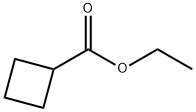
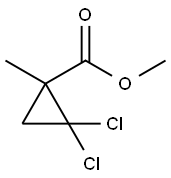
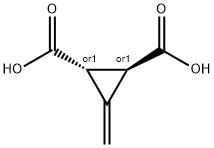
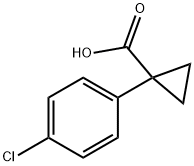
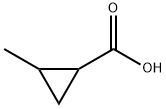
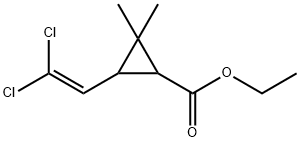
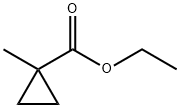
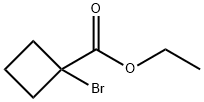
You may like
-
 DL-2-Methyl-1-butanol (Synthetic) CAS 137-32-6View Details
DL-2-Methyl-1-butanol (Synthetic) CAS 137-32-6View Details
137-32-6 -
 2-Methyl-1-butanol CAS 137-32-6View Details
2-Methyl-1-butanol CAS 137-32-6View Details
137-32-6 -
 D L-2-methyl-1-butanol CAS 137-32-6View Details
D L-2-methyl-1-butanol CAS 137-32-6View Details
137-32-6 -
 55441-95-7 99%View Details
55441-95-7 99%View Details
55441-95-7 -
 N-Vinylformamide 99%View Details
N-Vinylformamide 99%View Details
13162-05-5 -
 Chloro Uracil 1820-81-1 99%View Details
Chloro Uracil 1820-81-1 99%View Details
1820-81-1 -
 2-ethyl-6-methyl-3-hydroxypyridine succinate 99%View Details
2-ethyl-6-methyl-3-hydroxypyridine succinate 99%View Details
127464-43-1 -
 2-ETHYLPYRIDINE 100-71-0 99%View Details
2-ETHYLPYRIDINE 100-71-0 99%View Details
100-71-0